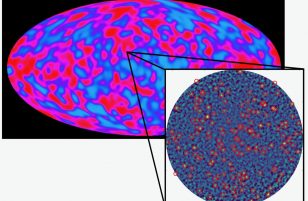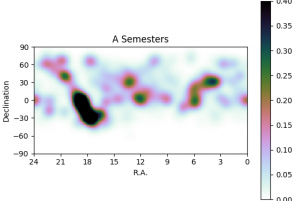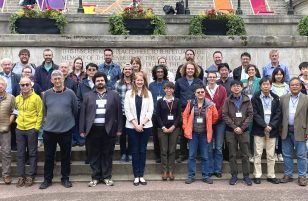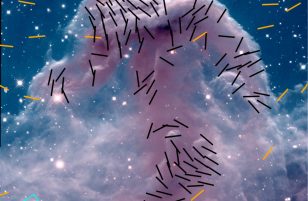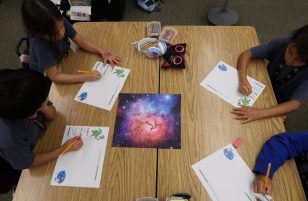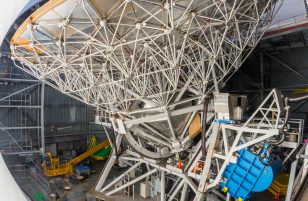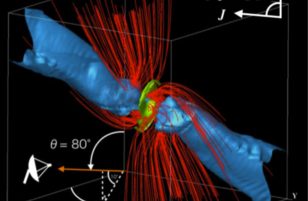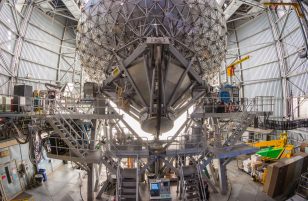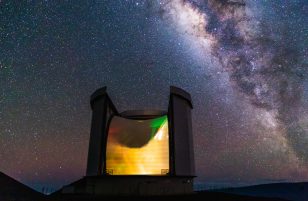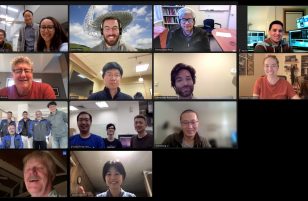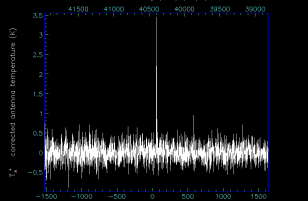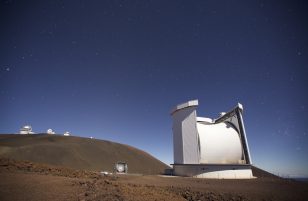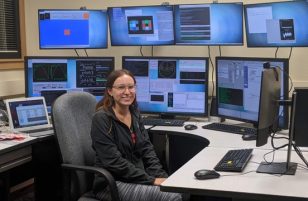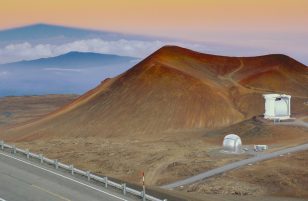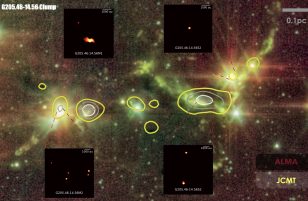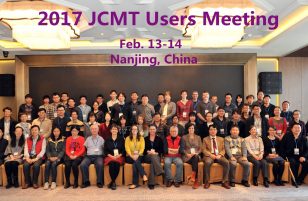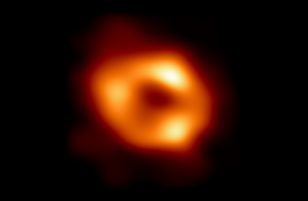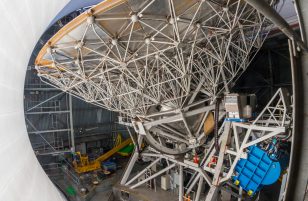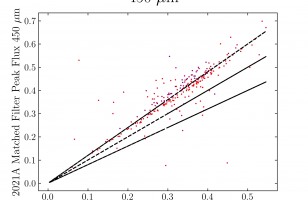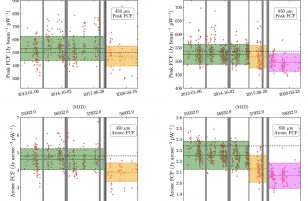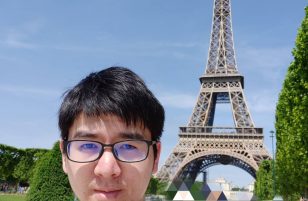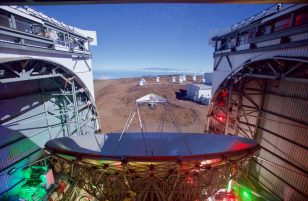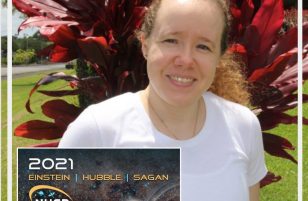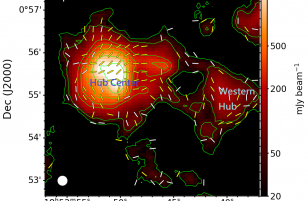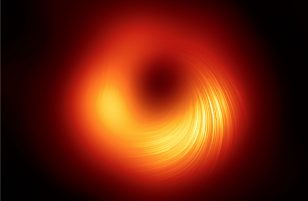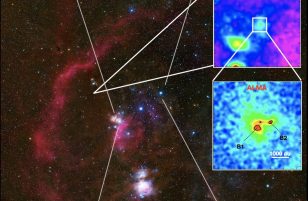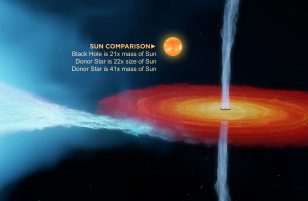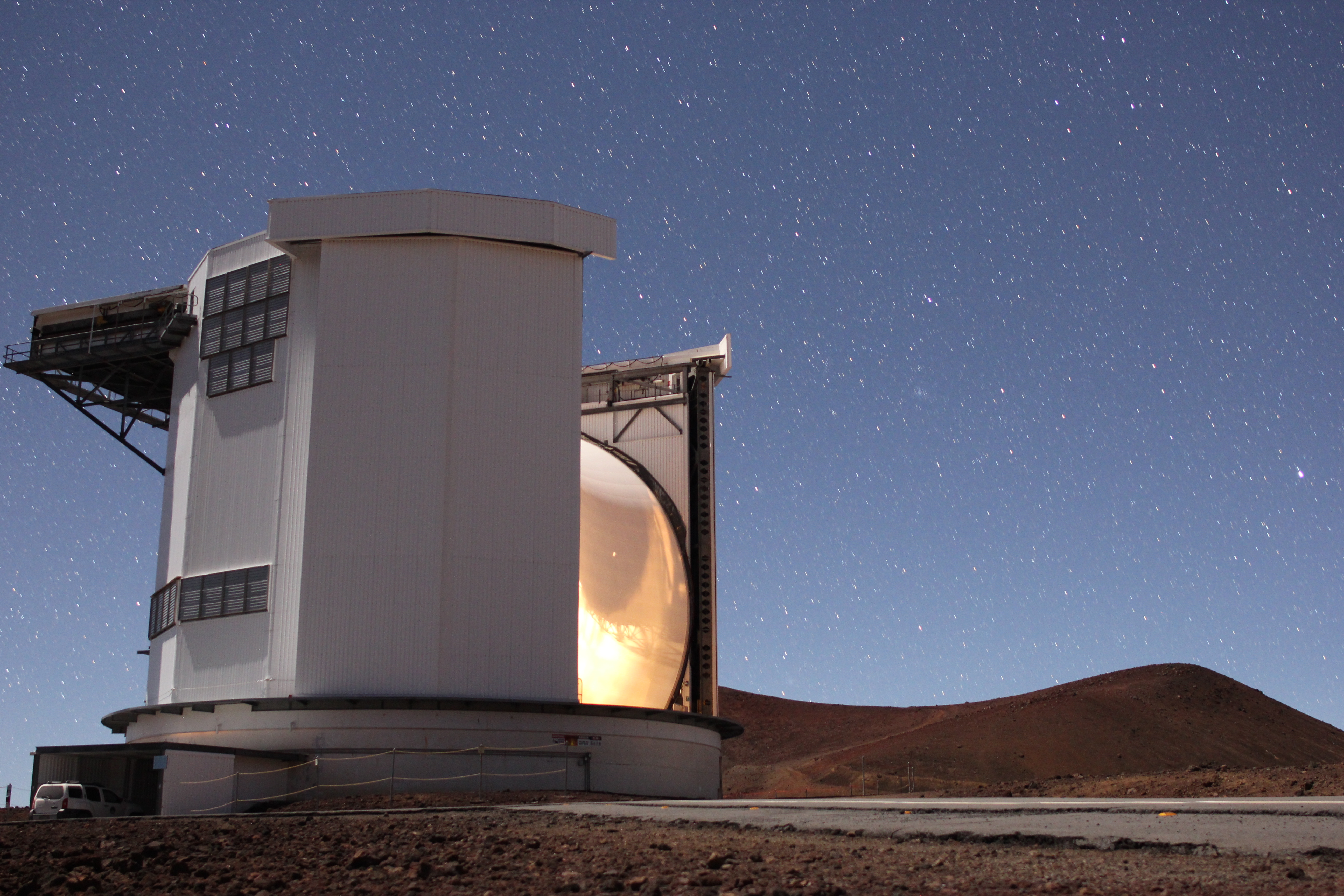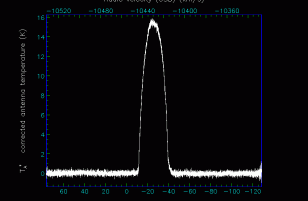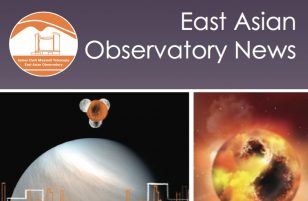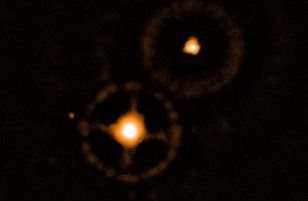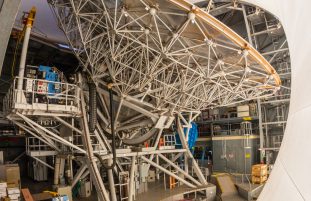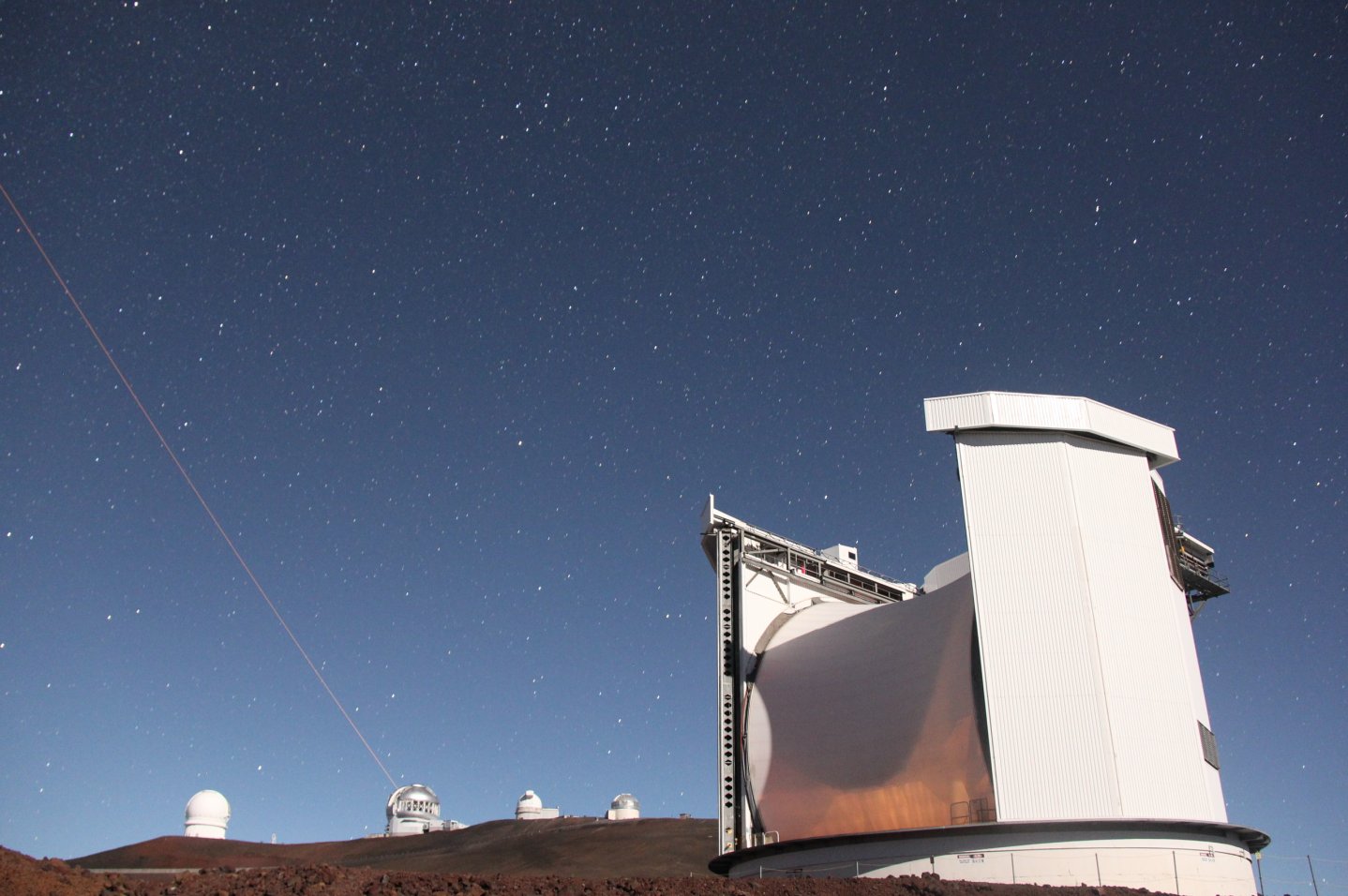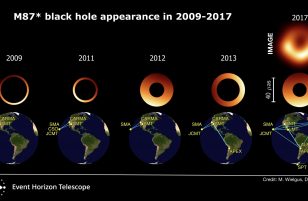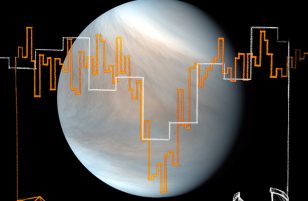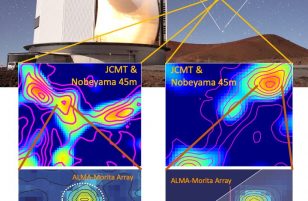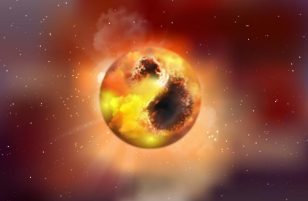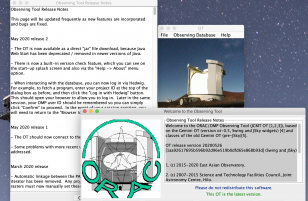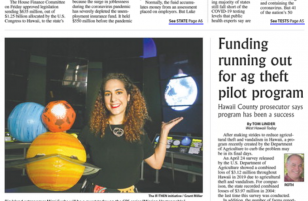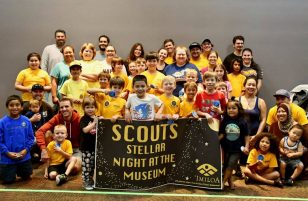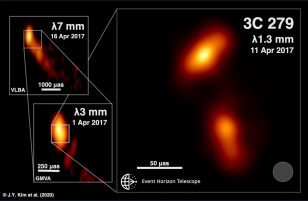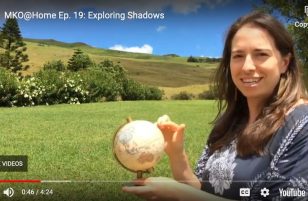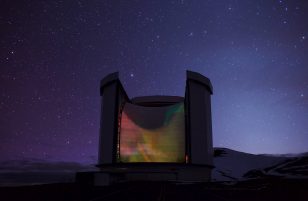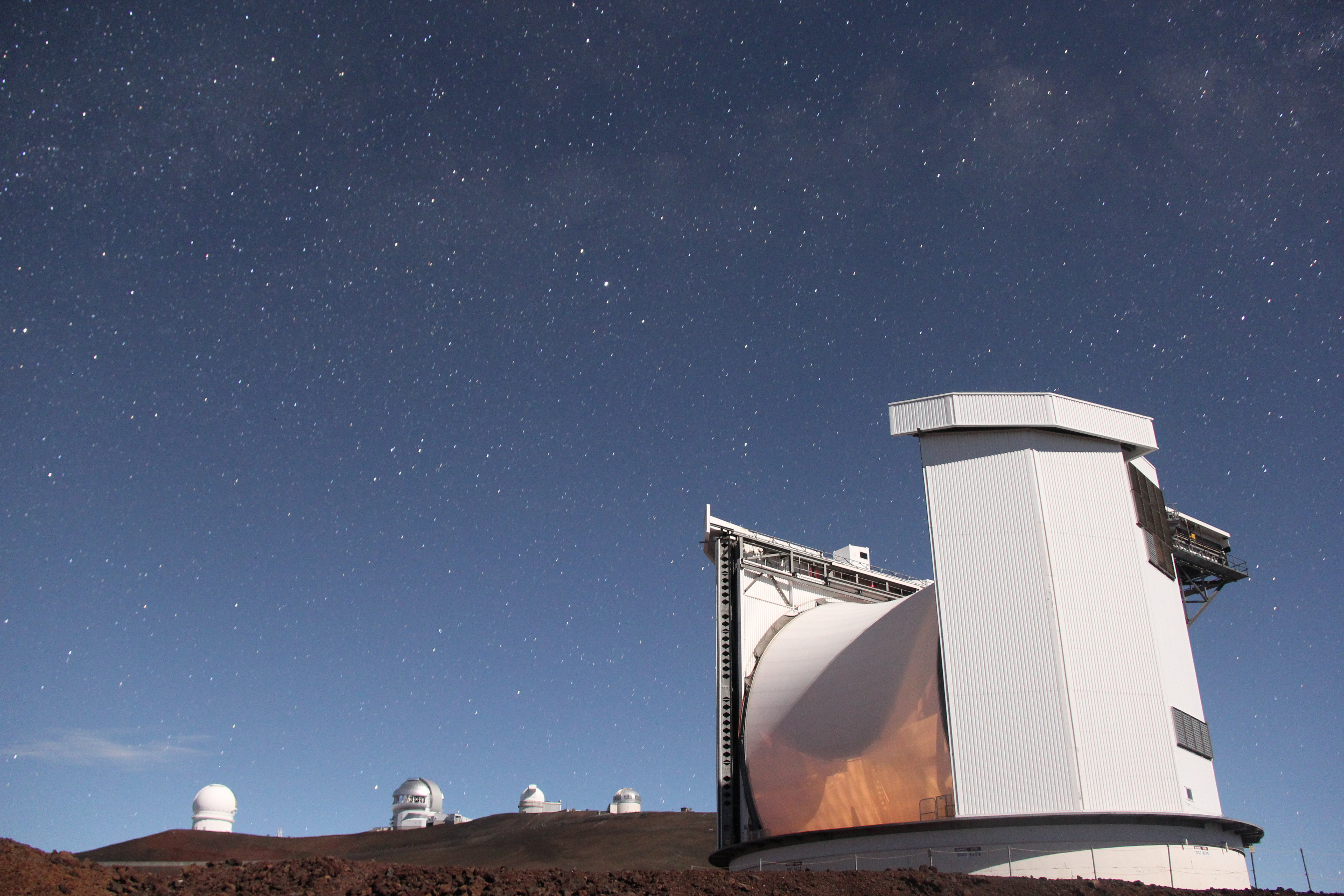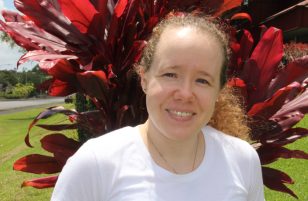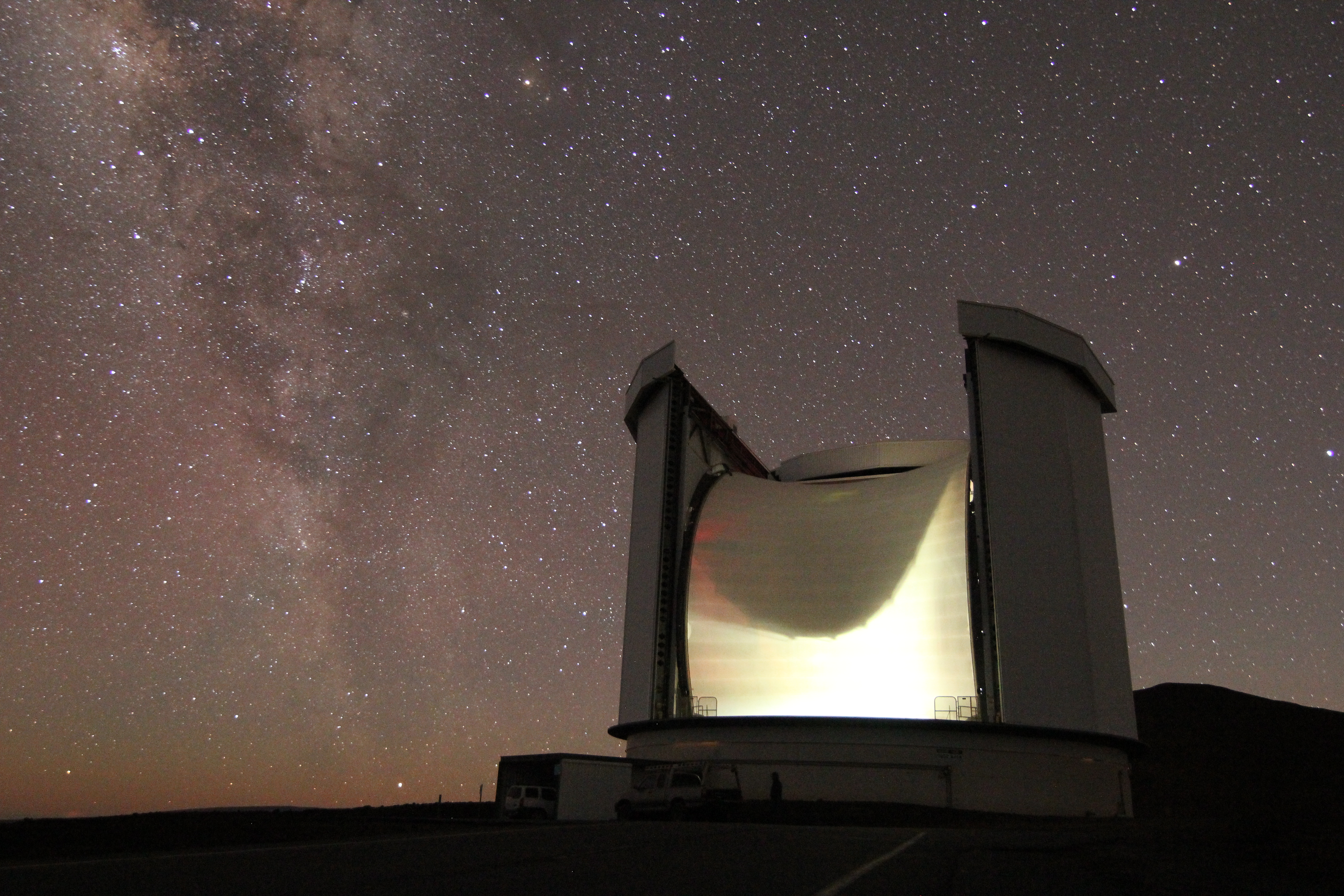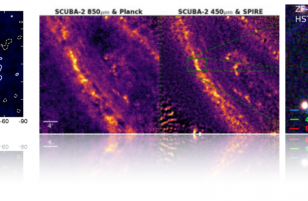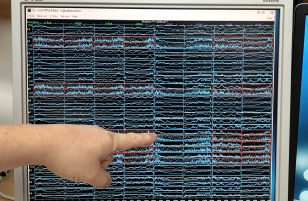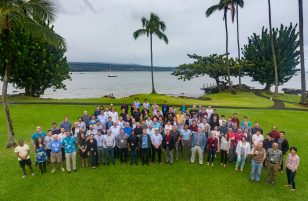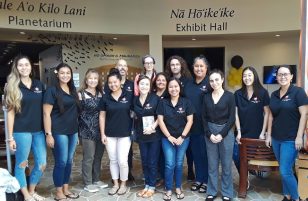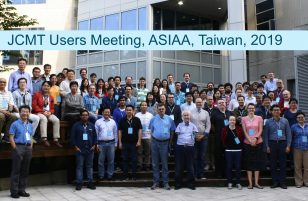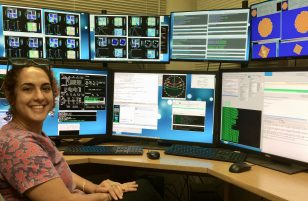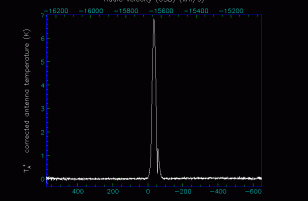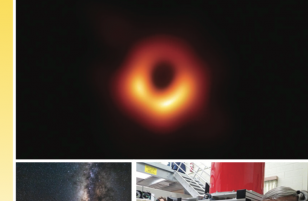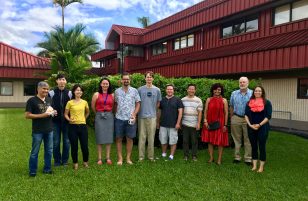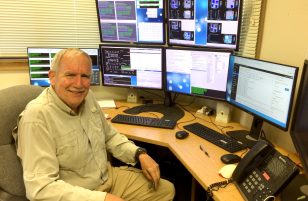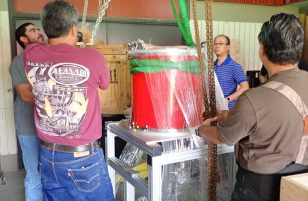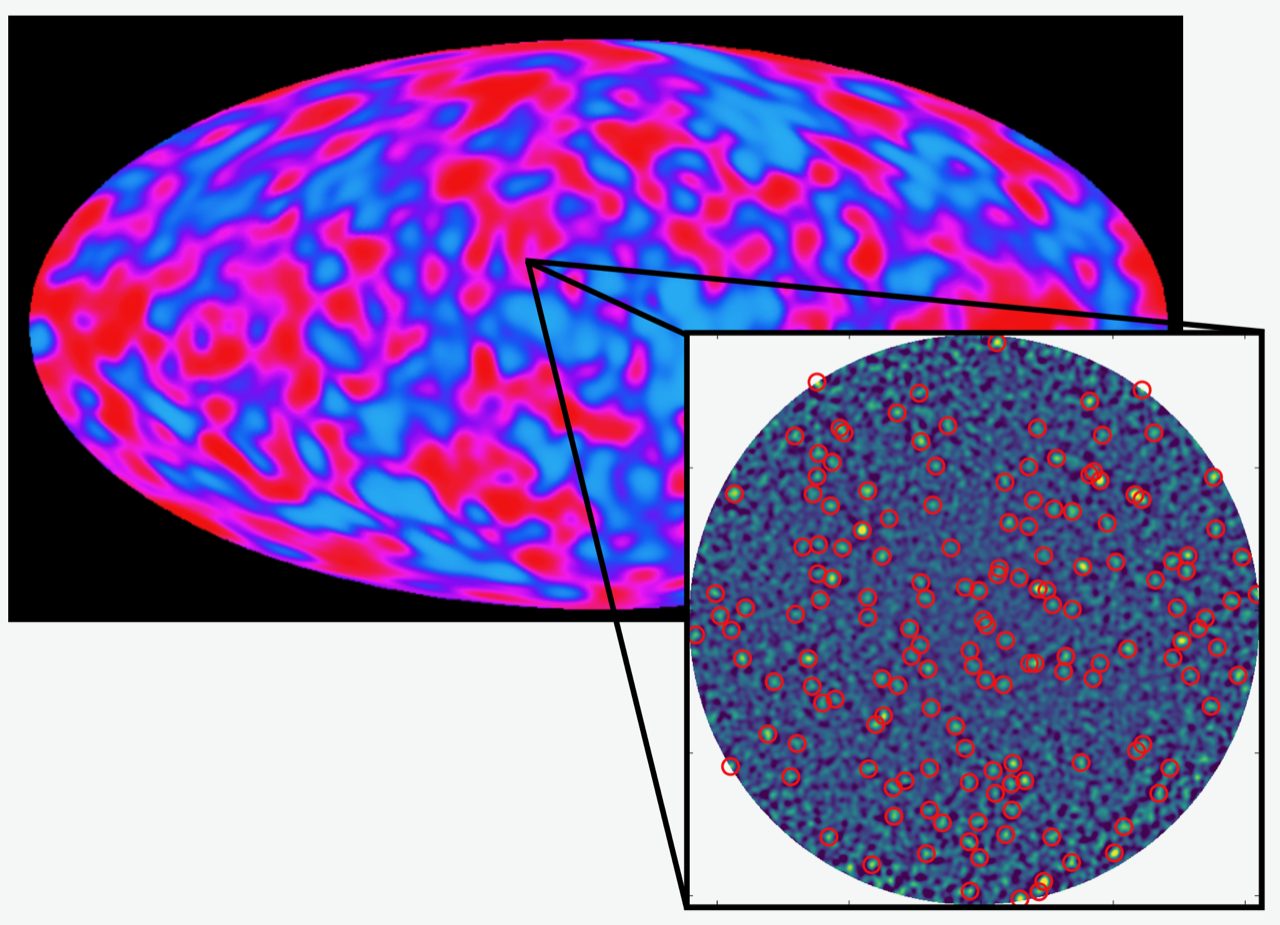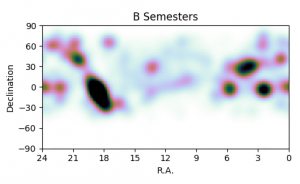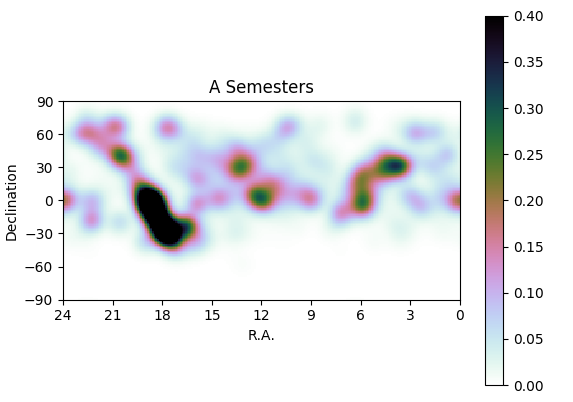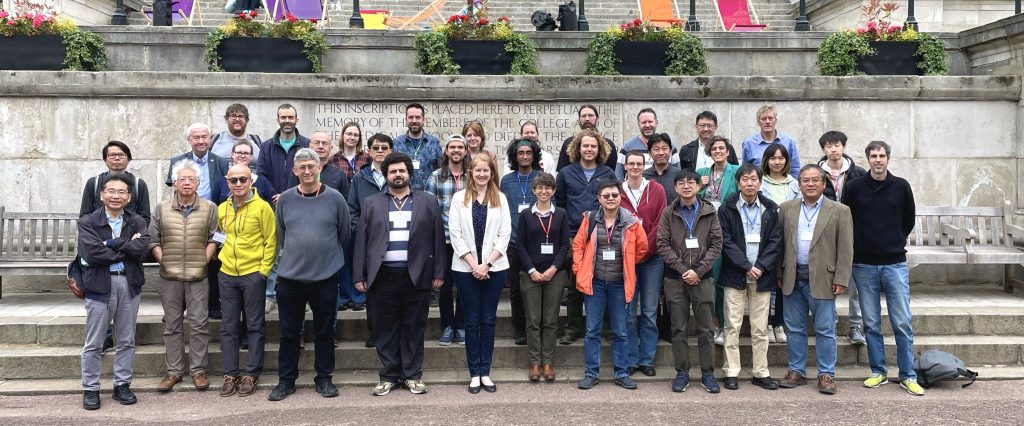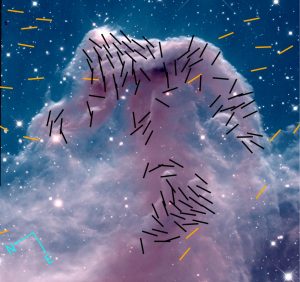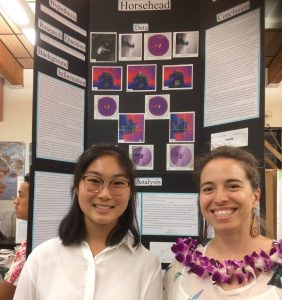Call for Proposals – for Semester 25B
The East Asian Observatory is now accepting proposals PIs for Semester 25B at the James Clerk Maxwell Telescope (JCMT). Proposal submission is via the JCMT proposal handling system, Hedwig. For full details, and for proposal submission, please see
https://proposals.eaobservatory.org
This Call for proposals closes on April 26th, 00:00 UTC. The Hedwig system permits the submission (and re-submission) of proposals until this deadline.
If this is your first time using Hedwig, you should ‘Log in’ and generate an account. There is a Hedwig ‘Help’ facility at the upper right corner of each page, and individual Help tags in many other places. Note that Hedwig also allows a user to create copies of their preexisting proposals, in order to simplify the process of proposal re-submission.
Proposers might be interested to note the proposal pressure in terms of RA and DEC. The figure below shows the distribution of target RA proposed in the past under Semester B. When allocating time the TAC is mindful to ensure that time is awarded across a range of RAs.
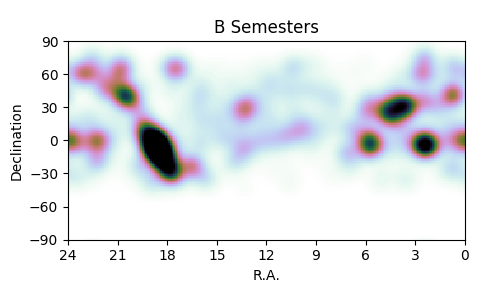
Please contact us at helpdesk@eaobservatory.org if you have remaining questions about either of the above Calls for Proposals.
25A Rapid Turnaround Call for Proposals for Heterodyne Instruments
The East Asian Observatory is now accepting proposals for the 25A semester Rapid Turnaround (RT) call for proposals that requests observing time with Heterodyne instruments at the James Clerk Maxwell Telescope (JCMT). This special RT call for proposals requests observations of targets visible in April, it particularly welcomes proposals targeting R.A. ranges with gaps in the 25A Principal Investigator (PI) queue. Proposal submission is via the JCMT proposal handling system, Hedwig. For full details, and for proposal submission, please see:
The first cycle of the 25A Call for Rapid Turnaround (RT) closes on March 31st, 00:00 UTC.
PI eligibility for this Call has the same criteria as for the 25A PI call for proposals. PIs of PI observing proposals to JCMT must be from Taiwan, Thailand, Japan, China, South Korea, or from universities in the UK and Ireland that contribute to JCMT, or from the Expanding Partner Program regions (Indonesia, Malaysia, Vietnam, India, Brazil, and Argentina). For more information about PI eligibility and the Expanding Partner Program, please see:
Proposers should note the proposal pressure across Right Ascension (RA) for heterodyne instruments, as shown in the histogram. The bar represents the fractional number of hours allocated to the PI queue considering only heterodyne instruments. The JCMT welcomes proposals that utilize the full range of RAs available in semester 25A, and it particularly welcomes proposals targeting R.A. ranges with gaps in the Principal Investigator (PI) queue. These gaps, caused by the uncertain operational status of SCUBA-2, currently exist between 8 and 15 hours R.A.

If this is your first time using Hedwig, you should use the ‘Log in’ button to generate an account. There is a Hedwig ‘Help’ facility at the upper right corner of each page, and individual Help tags in many other places. Note that Hedwig also allows a user to create copies of their previous approved proposals that were not completed (‘Continuation Request’), in order to simplify the process of proposal resubmission.
Please contact us at helpdesk@eaobservatory.org if you have remaining questions about either of the above Calls for Proposals.
South Korea Call for Proposals – for Semester 25A
The East Asian Observatory is now accepting proposals PIs from South Korea for Semester 25A at the James Clerk Maxwell Telescope (JCMT). Proposal submission is via the JCMT proposal handling system, Hedwig. For full details, and for proposal submission, please see
https://proposals.eaobservatory.org
This Call for proposals closes on Feb. 5th, 00:00 UTC. The Hedwig system permits the submission (and repeated re-submission) of proposals until this deadline.
If this is your first time using Hedwig, you should ‘Log in’ and generate an account. There is a Hedwig ‘Help’ facility at the upper right corner of each page, and individual Help tags in many other places. Note that Hedwig also allows a user to create copies of their preexisting proposals, in order to simplify the process of proposal re-submission.
Please contact us at helpdesk@eaobservatory.org if you have remaining questions about either of the above Calls for Proposals.
Call for Proposals – for Semester 25A
The East Asian Observatory is now accepting proposals for the Principal Investigator (PI) queue for Semester 25A at the James Clerk Maxwell Telescope (JCMT). Proposal submission is via the JCMT proposal handling system, Hedwig. For full details, and for proposal submission, please see
https://proposals.eaobservatory.org/
The 25A Call for PI Proposals closes on November 9th 2024 00:00 UTC time. The Hedwig system permits the submission (and repeated re-submission) of proposals until this deadline.
If this is your first time using Hedwig, you should use the ‘Log in’ button to generate an account. There is a Hedwig ‘Help’ facility at the upper right corner of each page, and individual Help tags in many other places. Note that Hedwig also allows a user to create copies of their previous approved proposals that were not completed (‘Continuation Request’), in order to simplify the process of proposal resubmission.
Proposers might be interested to note the proposal pressure in terms of RA and DEC. The figure below shows the distribution of target RA proposed in the past under Semester A. When allocating time the TAC is mindful to ensure that time is awarded across a range of RAs.
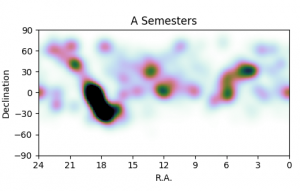
Please contact us at helpdesk@eaobservatory.org if you have remaining questions about either of the above Calls for Proposals.
Call for Proposals – for Semester 24B
The East Asian Observatory is now accepting proposals for the Principal Investigator (PI) queue for Semester 24B at the James Clerk Maxwell Telescope (JCMT). Proposal submission is via the JCMT proposal handling system, Hedwig. For full details, and for proposal submission, please see
https://proposals.eaobservatory.org/
The 24B Call for PI Proposals closes on March 17th 2024. The Hedwig system permits the submission (and repeated re-submission) of proposals until this deadline.
If this is your first time using Hedwig, you should ‘Log in’ and generate an account. There is a Hedwig ‘Help’ facility at the upper right corner of each page, and individual Help tags in many other places. Note that Hedwig also allows a user to create copies of their preexisting proposals, in order to simplify the process of proposal re-submission.
Proposers might be interested to note the proposal pressure in terms of RA and DEC. The figure below shows the distribution of target RA proposed in the past under Semester B. When allocating time the TAC is mindful to ensure that time is awarded across a range of RAs.
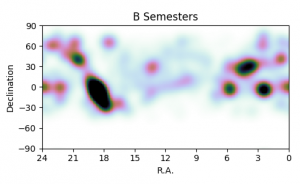
Please contact us at helpdesk@eaobservatory.org if you have remaining questions about either of the above Calls for Proposals.
South Korea Call for Proposals – for Semester 24A
The East Asian Observatory is now accepting proposals PIs from South Korea for Semester 24A at the James Clerk Maxwell Telescope (JCMT). Proposal submission is via the JCMT proposal handling system, Hedwig. For full details, and for proposal submission, please see
https://proposals.eaobservatory.org
This Call for proposals closes on January 10th 2024 00:00 UTC. The Hedwig system permits the submission (and repeated re-submission) of proposals until this deadline.
If this is your first time using Hedwig, you should ‘Log in’ and generate an account. There is a Hedwig ‘Help’ facility at the upper right corner of each page, and individual Help tags in many other places. Note that Hedwig also allows a user to create copies of their preexisting proposals, in order to simplify the process of proposal re-submission.
Please contact us at helpdesk@eaobservatory.org if you have remaining questions about either of the above Calls for Proposals.
Call for Proposals – for Semester 24A
The East Asian Observatory is now accepting proposals for the Principal Investigator (PI) queue for Semester 24A at the James Clerk Maxwell Telescope (JCMT). Proposal submission is via the JCMT proposal handling system, Hedwig. For full details, and for proposal submission, please see
https://proposals.eaobservatory.org/
The 24A Call for PI Proposals closes on September 10th 2023. The Hedwig system permits the submission (and repeated re-submission) of proposals until this deadline.
If this is your first time using Hedwig, you should ‘Log in’ and generate an account. There is a Hedwig ‘Help’ facility at the upper right corner of each page, and individual Help tags in many other places. Note that Hedwig also allows a user to create copies of their preexisting proposals, in order to simplify the process of proposal re-submission.
Please contact us at helpdesk@eaobservatory.org if you have remaining questions about either of the above Calls for Proposals.
Call for Proposals – Supplemental Call for 23B for United kingdom & Ireland
The East Asian Observatory invites astronomers from UK & Ireland institutions to propose for time in 23B under the UK & Ireland supplemental call for proposals. More details can be found in the JCMT Hedwig proposal system. The supplemental call will cover the 23B semester running from August 1st to January 31st 2023.
The call opened 2023-07-13 00:00 UT and will close 2023-07-26 23:59 UT. For full details, and for proposal submission, please see:
https://proposals.eaobservatory.org/
Please contact us at helpdesk@eaobservatory.org if you have remaining questions about either of the above Calls for Proposals.
Call for Proposals – for Semester 23B
The East Asian Observatory is happy to invite PI observing proposals for Semester 23B at the JCMT. Proposal submission is via the JCMT proposal handling system, Hedwig. For full details, and for proposal submission, please see
https://proposals.eaobservatory.org/
The 23B Call for PI Proposals closes on 2023-03-16 01:00 UT. The Hedwig system permits the submission (and repeated re-submission) of proposals until this deadline.
If this is your first time using Hedwig, you should ‘Log in’ and generate an account. There is a Hedwig ‘Help’ facility at the upper right corner of each page, and individual Help tags in many other places. Note that from this semester onward, Hedwig also allows a user to create copies of their preexisting proposals, in order to simplify the process of proposal re-submission.
For further details regarding current or previous Calls for Proposals, please see the proposal web pages.
Please contact us at helpdesk@eaobservatory.org if you have remaining questions about either of the above Calls for Proposals.
Call for Proposals – Supplemental Call for 23A for South Korea
The JCMT invites astronomers from South Korea to propose for time in 23A under the South Korean supplemental call for proposals. More details can be found in the JCMT Hedwig proposal system. The supplemental call will cover the 23A semester running from February 1st to July 31st 2023.
The call opened 2023-01-05 23:00 UT and will close 2023-01-26 23:00 UT
Please contact us at helpdesk@eaobservatory.org if you have remaining questions about either of the above Calls for Proposals.
Call for Proposals – for Semester 23A
The East Asian Observatory is happy to invite PI observing proposals for Semester 23A at the JCMT. Proposal submission is via the JCMT proposal handling system, Hedwig. For full details, and for proposal submission, please see
https://proposals.eaobservatory.org/
The 23A Call for PI Proposals closes on the October 12th 2022. The Hedwig system permits the submission (and repeated re-submission) of proposals until this deadline.
If this is your first time using Hedwig, you should ‘Log in’ and generate an account. There is a Hedwig ‘Help’ facility at the upper right corner of each page, and individual Help tags in many other places. Note that from this semester onward, Hedwig also allows a user to create copies of their preexisting proposals, in order to simplify the process of proposal re-submission.
For further details regarding current or previous Calls for Proposals, please see the proposal web pages.
Please contact us at helpdesk@eaobservatory.org if you have remaining questions about either of the above Calls for Proposals.
Call for Proposals – for Semester 22B
The East Asian Observatory is happy to invite PI observing proposals for Semester 22B at the JCMT. Proposal submission is via the JCMT proposal handling system, Hedwig. For full details, and for proposal submission, please see
https://proposals.eaobservatory.org/
The 22B Call for PI Proposals closes on the 2nd of April, 2022 at 01:00 UT. The Hedwig system permits the submission (and repeated re-submission) of proposals until this deadline.
If this is your first time using Hedwig, you should ‘Log in’ and generate an account. There is a Hedwig ‘Help’ facility at the upper right corner of each page, and individual Help tags in many other places. Note that from this semester onward, Hedwig also allows a user to create copies of their preexisting proposals, in order to simplify the process of proposal re-submission.
For further details regarding current or previous Calls for Proposals, please see the proposal web pages.
Please contact us at helpdesk@eaobservatory.org if you have remaining questions about either of the above Calls for Proposals.
– 20220221
The Call for Proposals for Semester 22A has closed.
Call for Proposals – for Semester 22A
The East Asian Observatory is happy to invite PI observing proposals for Semester 22A at the JCMT. Proposal submission is via the JCMT proposal handling system, Hedwig. For full details, and for proposal submission, please see
https://proposals.eaobservatory.org/
The 22A Call for PI Proposals closes on September 15th, 2021. The Hedwig system permits the submission (and repeated re-submission) of proposals until this deadline.
If this is your first time using Hedwig, you should ‘Log in’ and generate an account. There is a Hedwig ‘Help’ facility at the upper right corner of each page, and individual Help tags in many other places. Note that from this semester onward, Hedwig also allows a user to create copies of their preexisting proposals, in order to simplify the process of proposal re-submission.
Call for Large Programs (IV) – for Semester 22A
The East Asian Observatory is also happy to invite applications for the fourth Call for JCMT Large Programs. At this time, 4,200 hours in weather Grades 4 and 5 will be available for Large Programs up until the end of the 24B semester. Submissions will be accepted until the September 15th, 2021 deadline. Please see here for more details. The proposal handling system, Hedwig, is available here.
For further details regarding current or previous Calls for Proposals, please see the proposal web pages.
Please contact us at helpdesk@eaobservatory.org if you have remaining questions about either of the above Calls for Proposals.
– 20210815
The Call for Proposals for Semester 21B has closed.




